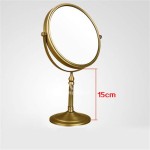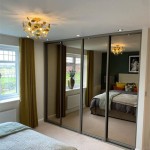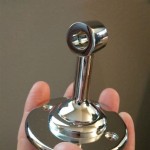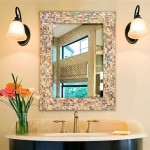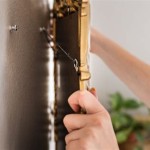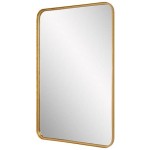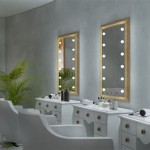Is a Mirror Metallic or Nonmetallic?
The question of whether a mirror is metallic or nonmetallic depends on the perspective taken. While the reflective surface of a mirror is typically metallic, the entire structure of a mirror often incorporates nonmetallic components. This article will delve into the composition of mirrors, exploring the roles of both metallic and nonmetallic materials in their construction and functionality.
The Reflective Surface: Metallic
The crucial component of a mirror responsible for reflection is a thin layer of metal. Historically, silver was the preferred metal due to its high reflectivity across the visible light spectrum. Modern mirrors frequently utilize aluminum, which offers high reflectivity, lower cost, and better resistance to corrosion compared to silver. This metallic layer is incredibly thin, often just a few hundred nanometers thick, and is applied to a substrate.
The Substrate: Typically Nonmetallic
The substrate provides structural support for the delicate metallic layer. Common substrate materials include glass, plastic, and even polished metal. Glass is a popular choice due to its rigidity, smoothness, and affordability. Plastic substrates are lighter and more resistant to breakage, making them suitable for applications requiring flexibility or portability. Polished metal can be used as a substrate in specialized mirrors, particularly those designed for high-temperature environments.
The Protective Layer: Nonmetallic
A protective layer is often applied over the metallic reflective layer to prevent oxidation and damage. This layer is typically a nonmetallic material, such as paint, lacquer, or a specialized dielectric coating. This coating not only safeguards the reflective surface but also enhances the mirror's durability and longevity.
The Back Coating: Often Nonmetallic
Mirrors often have a backing applied to the substrate opposite the reflective surface. This backing can serve several purposes. It provides additional protection for the reflective layer, can improve the mirror's aesthetic appeal, and can enhance the reflectivity by minimizing light loss through the substrate. Common backing materials include paint, specialized polymers, or another layer of metal, often less reflective than the front coating.
The Frame (Optional): Varied Materials
While not an integral part of the mirror's reflective properties, the frame plays a crucial role in its overall structure and presentation. Frames can be made from a variety of materials, both metallic and nonmetallic. Wood, plastic, and metal are common choices, each offering distinct aesthetic qualities and levels of durability.
Different Types of Mirrors and Their Materials
Different applications require different types of mirrors, which can influence the materials used in their construction. For example, telescopic mirrors often employ specialized glass substrates with extremely low thermal expansion coefficients. Dental mirrors utilize small, angled, and highly polished metal surfaces attached to handles for precise viewing. One-way mirrors use a thin metallic coating that allows partial light transmission, creating the illusion of reflection from one side and transparency from the other.
The Role of Metallic and Nonmetallic Components
The interplay between metallic and nonmetallic components in a mirror is essential for its functionality. The metal layer provides the reflective surface, while the nonmetallic components offer structural support, protection, and enhanced durability. The specific materials chosen depend on the intended application and desired properties of the mirror, balancing cost, reflectivity, longevity, and aesthetic considerations.
What Are The Advantages And Disadvantages Of Using Glass Instead Metal For Mirrors Quora
Solved 3 2 Mineral Properties Activity A Indicate Whether Chegg Com
Solved 3 2 Mineral Properties Activity A Indicate Whether Chegg Com

Solved Activity 3 2 Mineral Properties Ame Course Section Chegg Com
Solved Indicate Whether The Er Of Each Following Chegg Com
Solved Indicate Whether The Er Of Each Following Chegg Com

Non Metallic Minerals Geeksforgeeks

Solved Please Answer All Of The Questions If You Are Not Chegg Com
Solved 3 2 Mineral Properties Activity A Indicate Whether Chegg Com

Solved A3 1 3 About How Many Crystals Do You See In This Chegg Com


